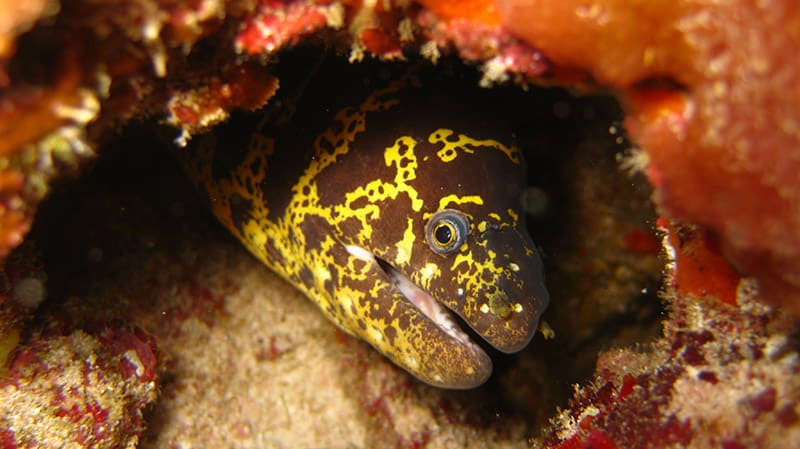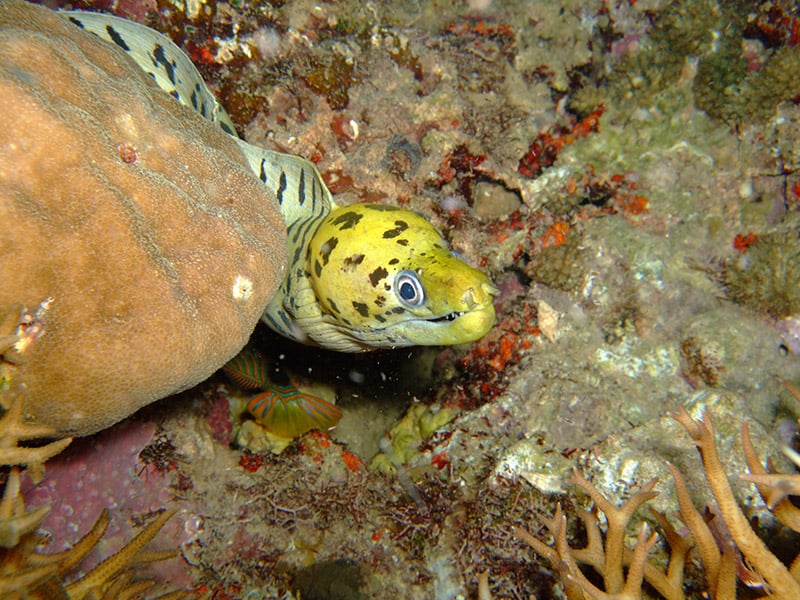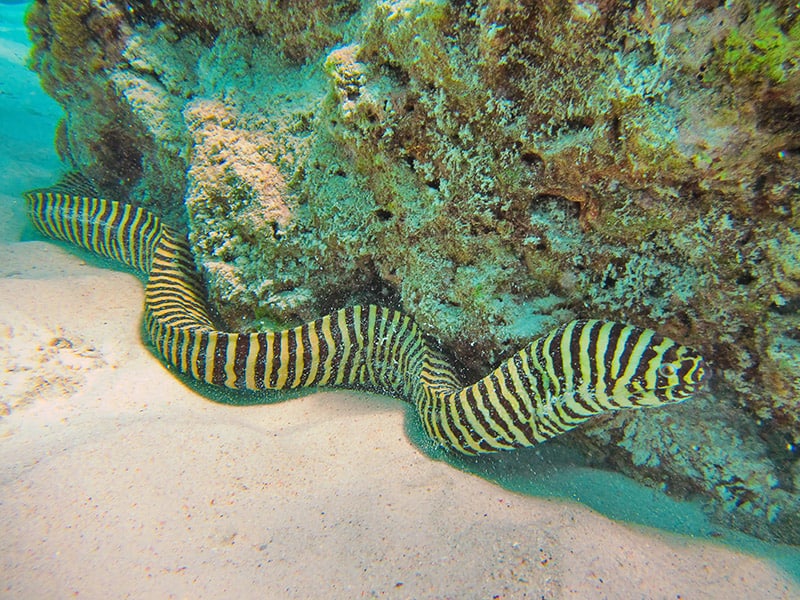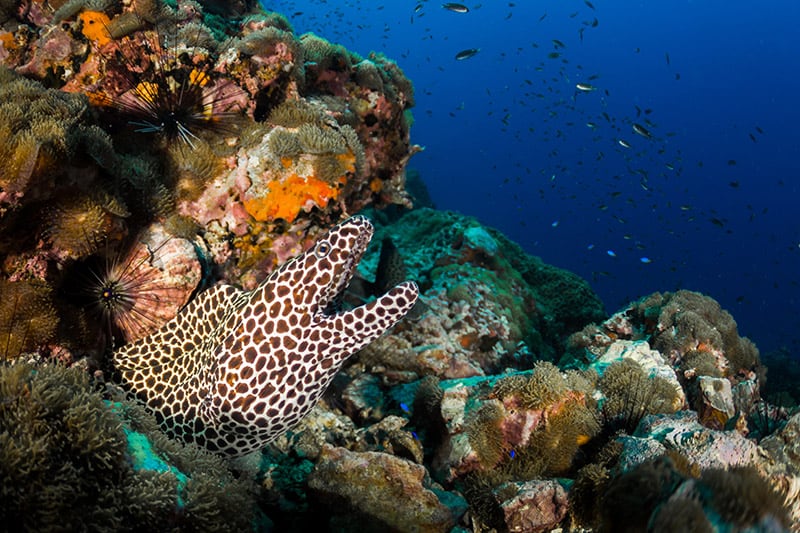The Romans valued morays very highly, sometimes decorating them with jewels! Marine eels are generally very hardy and easy to keep!
There are actually two eels in the picture above. One is what is commonly called a “Moray Eel” Gymnothorax kidako, while the other is probably what is called “Chainlink Moray Eel”, Echidna catenata. Both eels are about 2.5 feet long and so require a good 150 gallon aquarium. While eels normally eat small fishes and a few invertebrates, the genus Echidna, like the chainlink eel above, have teeth that are modified to crush the shells and carapaces of crustaceans and molluscs. Some morays even eat sea Urchins.
There are about 20 other families of eels, the moray is the most commonly kept in aquaria and are the family mostly covered here. As soon as we get specimens and/or pictures of other kinds, we will include them also.
This is a nocturnal family of fish that lives in holes and caves in the reef and snatching any hapless fish that may wander by. They are undemanding in the aquarium as long as they have plenty of room, a place to hide, and plenty of food. Morays locate food mainly with their sense of smell.
- For more information on keeping marine fish see: Guide to a Happy, Healthy Marine Aquarium
Muraenidae – Morays
Atlantic Chain Moray Eel

Echidna catenata
Common Moray Eel

Ribbon Eel

Yellowhead Moray Eel

Gymnothorax fimbriatus
Zebra Moray Eel

Care and feeding
In captivity eels will eat almost any kind of meaty food like live fish, shrimp, squid, and chopped up fish. In the wild squid is a delicacy so make sure and give them some once in a while.
Morays locate food mainly with their sense of smell. Watch your fingers when feeding a Moray since their eyesight is not very good and it is easy to mistake your fingers for a morsel of food.
Breeding Eels
Everything we have found on the subject indicates that they are not commonly bred in captivity for several reasons. First they will not breed until they are very large and have outgrown most aquariums. Also, morays, with the exception of ribbon eels, are what is called ‘gonochoristic’. The female will spawn either as a pair or with several smaller males. At dusk the eggs are released and are basically pelagic. The larval stage of the eel lasts for 6-10 months and so makes it difficult to reproduce in the aquarium.
Featured Image Credit: nicolasvoisin44, Shutterstock

